Total Internal Reflection
This tutorial explains how total internal reflection takes place with real life examples in everyday life.
The examples are animated in such a way that, not only can you connect the phenomenon with what you see, but also get an in-depth understanding in a wider area.
In this tutorial, you learn:
- Refraction of light from denser medium to less dense medium.
- Critical angle and interactive calculator to find it, when refractive index of each medium is known.
- Total internal reflection
- Everyday, real-life examples with total internal reflection
- fibre optic cable, reflecting prism and many more examples
- Some challenging question for AS physics, A Level physics courses, IB physics and high school physics courses
Critical Angle - C
When light goes from a denser medium to a less dense medium, at a certain angle of incidence, the refracted ray goes along the boundary
between the two media. The incident angle on this occasion
is called the critical angle for the substances.
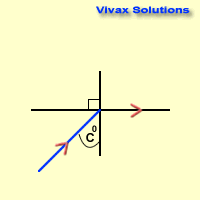
μg = sin 90 / sin c
sin c = 1/ μg
c = sin-11/ μg
c = sin-1(1 / μ)
| Media | Critical Angle |
|---|
| glass / air | 420 |
| water / air | 480 |
| glass / water | 630 |
Finding a good text book - without space-devouring silly cartoons - for physics can be as challenging as mastering the subject.
So,Vivax Solutions highly recommends the following books for you to complement what you learn here:Practice in Physics contains a huge collection of problems for practising; A-Level physics is a great text book to get an in-depth understanding of every major topic in physics.
You can find the critical angles for various substances by the following programme:
Total Internal Reflection
When light goes from a denser medium to a less dense medium, as the angle of incidence exceeds the
critical angle, the ray reflects back to the denser medium. This phenomenon is called
Total Internal Reflection.
Total Internal Reflection is a very efficient reflection, as the loss of light energy is almost
negligible.
Total Internal Reflection - interactive practice
You can animate the following applet: the angle of incident will change and the angle of reflection will change in proportion to it. You will see the critical angle and total internal reflection too.
Amazon Best Sellers:
These flash cards will make a significant difference when you revise for your forthcoming exams: very informative and neatly presented; they became best sellers for a reason.






Uses and Effects of Total Internal Reflection
- Reflecting prisms
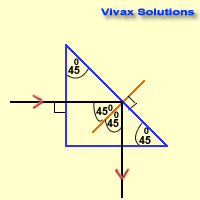
- In optical instruments, right-angled prisms are widely used to divert the course of light rays. As the total internal reflection takes place within them, the loss of light energy can be kept to a minimum. So, the
prisms are preferred to mirrors for the purpose of reflection.
- Mirage
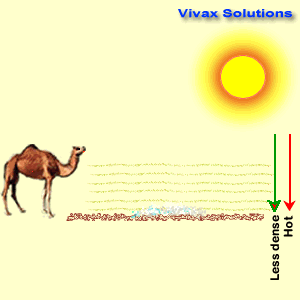
- On hot summer days or in the deserts, patches of water appear to us, some miles in front of us, only to find none when we approach them. This phenomenon is caused by the total
internal reflection. The air layers on the ground become hot and less dense in these places and light, when comes down has to pass through these less-dense layers. At a certain point, the light
exceeds the critical angles and the total internal reflection takes place on a vast scale, creating the illusive puddles of water.
- Sparkles in diamonds
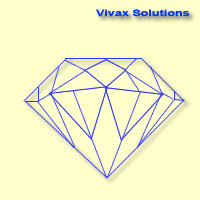
- The sparkles inside diamonds are cause by total internal reflection. Diamond is well-known for its toughness - very
dense and μ is very high; larger refractive index means smaller critical angle. Therefore,
when light enters a diamond, the possibility of it being subjected to total internal reflection is very high, that in turn causes sparkles.
- Optic fibres

- Optic fibres revolutionized the communication that we take for granted today. This humble device - a thin flexible glass
fibre with a coating - carries light through a distance of miles and miles, with a very
little loss of its energy, thanks to total internal reflection. The trick is done by keeping the outer layer known as cladding less dense relative to the inner dense core - the first condition for total internal reflection.
Since light enters almost parallel to the fibre, the angle of incidence is high and it easily exceeds the critical angle that triggers off the total internal reflection. The flexibility of the
fibres, light weight,
low cost and the ability to send light signals through them with very little loss of light, make then indispensable in modern communication networks.
- Medical uses - the endoscope
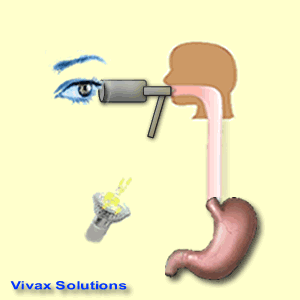
- This is an instrument consisting of optic fibres. It is used by the medical professionals to see inside the body. The flexibility of optic fibres contributed to the invention of this device.
Please answer the following questions.
- ABC is a right-angled prism with AC being the longest side. A light ray enters through AC at right angles and hits AB, reflects and then goes out through BC. Show this prism can never be
an isosceles prism.
- A diver sees a circular patch on the surface of water. Calculate its radius, assuming the refractive index of water as 4/3.
- An isosceles right-angled glass prism can be used for the total internal reflection, but not a similar ice one. Explain. Take μg = 1.5 and μw = 1.3
- Optic fibres are used as bundles of thin fibres instead of a thick single one. Explain this.
- A light ray has to be diverted by 1800 inside a right-angled prism. Show how this is achievable using a ray diagram.
- Using a ray diagram show how two prisms are used to divert a ray of light inside a pair of binoculars while keeping the image the same way up.
This is how these cubes work:
Now that you have read this tutorial, you will find the following tutorials very helpful too: